Vologases I
Vologases I: Arsacid king of the Parthian Empire (r.51-78).
Accession
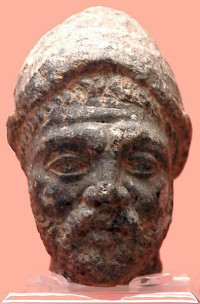
In c.47 CE, the Parthian king Vardanes I was assassinated. His brother Gotarzes II, who had tried to become king before, returned to the throne but died in 51.note His successor was a man named Vonones II, who was immediately succeeded by Vologases I,note who managed to gave some stability to the Parthian Empire again. According to the Roman author Tacitus, Vologases was the son of Vonones and a Greek concubine.note
Affairs in Armenia
In the next year, 52, Vologases invaded Armenia, occupied its capitals Artaxata and Tigranocerta, and made his younger brother Tiridates king of Armenia.note This was a breach of a treaty that the Parthian king Phraates IV had concluded with the Roman emperor Augustus in 20 BCE: the Romans were allowed to appoint the Armenian king. Vologases may have thought that the old Roman emperor Claudius (r.41-54) would not adequately respond to this deliberate provocation. Indeed, Rome did not immediately send troops. Still, Vologases got the problems he had been asking for.
In Media and Hyrcania, his son Vardanes II revolted,note and it is certainly possible that he had Roman support. In any case, the Hyrcanian problems would continue for several years, required (according to Tacitus) "numerous campaigns",note and made it impossible for Vologases to intervene in Armenia. His supply lines were now threatened. To make problems worse, the Armenian winter turned out to be severe. As a consequence, an epidemic broke out,note and Vologases was forced to return home. The original king of Armenia, Rhadamistus, regained control and it seemed as if Vologases' gamble had been a failure.
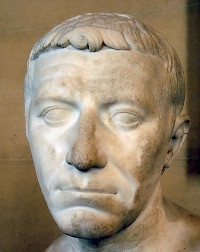
However, early in 55, the Armenians expelled Rhadamistus and invited Tiridates to come back.note Rome responded slowly, although the new emperor, Nero, sent a good general, Gnaeus Domitius Corbulo, who was to reorganize the army in Galatia and Cappadocia.note Nero also gave orders to his vassal kings to gather troops. Herod Agrippa II of Judaea and Antiochus IV of Commagene prepared bridges across the Euphrates. Moreover, the eastern frontier was reorganized and two new vassal kingdoms, Lesser Armenia (on the Black Sea) and Sophene (on the Euphrates), were assigned to Aristobulus, a relative of Herod Agrippa, and the Syrian prince Sohaemus.note Polemo of Pontus appears to have been another Roman ally.note
Roman Successes
Meanwhile, two Roman forces were prepared. The governor of Syria, Ummidius Quadratus, commanded two legions, X Fretensis and XII Fulminata, while the general in Cappadocia, Gnaeus Domitius Corbulo, reorganized III Gallica and VI Ferrata.note The Roman historian Tacitus tells that Corbulo had to restore discipline among his soldiers first, but this is a topical anecdote. It is possible that the Romans had little appetite for this war; both commanders sent messages to Vologases and were looking for a diplomatic settlement. The Parthian king, who had who still had to deal with his rebel son Vardanes II in Media and Hyrcania, complied and gave hostages to Ummidius (55).note.
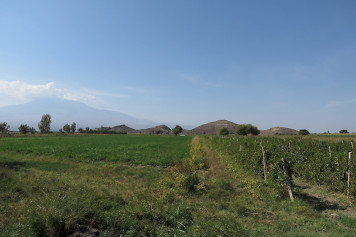
In the meantime, a new legion, IIII Scythica, arrived from the Danube, and the situation in Armenia got worse when Tiridates threatened pro-Roman Armenians. So the war, which both sides had tried to avert, broke out in 58.note After some initial fighting between the Armenians and the Roman forces, Corbulo proceeded to the Armenian capital Artaxata, forcing Tiridates to defend it, and risk a pitched battle. Indeed, the city fell,note followed by the other capital, Tigranocerta, in the next year.note Tiridates fled.
The Romans, now in control of Armenia, blocked the advance of a Parthian army given to Tiridates by Vologases,note and installed a new, pro-Roman king, Tigranes VI, supported by a Roman garrison.note Several Armenian districts in the west were added to the kingdoms of Rome's vassals: to Aristobulus of Lesser Armenia, to Polemo of Pontus, and to Antiochus of Commagene. It is interesting that, the new king of Armenia, Tigranes, was another Herodian prince: Herod Agrippa had sent troops, Aristobulus had been made king of Lesser Armenia, and Tigranes was the third descendant of Herod the Great.
When Corbulo returned from Armenia, he learned that governor Ummidius of Syria had died,note and that he was to succeed him. This was a very prestigious appointment, a worthy reward for a general who had in 58 and 59 been spectacularly successful. Syria was not only a wealthy province, but also a large one, with the two annexes Cappadocia and Judaea ruled by procurators. Corbulo arrived in Antioch, the capital of his new province, in 60.
The Parthians Return
The war was not over yet. The Romans continued to reinforce their army in Cappadocia with extra recruits and a new legion, V Macedonica, which arrived in 61. The knowledge that he would have Roman support gave the pro-Roman king of Armenia, Tigranes, the impression that he could do anything, and he raided the northern provinces of the Parthian Empire, especially Media Atropatene, which was governed by Vologases' brother Pacorus.note This forced Vologases, who wanted to keep out of the Armenian conflict because of the eastern revolt, to intervene. The king of Parthia convened a meeting of his nobility, declared that his brother Tigranes was the rightful king of Armenia, and marched against Rome after concluding an armistice in the east.note His HQs were at Nisibis.note
The Romans had expected this and had a plan. If the Parthians would invade Armenia, one army was to move from Cappadocia along a northerly road into Armenia (similar to the attack in 58). This would lure the Parthian army to the north, opening the road for a second Roman army, which was to move from Syria along a southerly road towards the Upper Tigris. If everything went according to plan, the Parthian army would be caught between two Roman forces and could be destroyed.
Unfortunately, the Romans were not ready when a Parthian army, commanded by a general named Monaesus, laid siege to Tigranocerta (spring 62): the commander of the northern army, Lucius Caesennius Paetus, had not arrived yet. He had been consul in 61 and may have had duties to perform. However that may be, when Vologases and Monaesus were approaching, Corbulo reinforced the garrison in Armenia,note and the Parthians were unable to take Tigranocerta.note Corbulo now sent an envoy to Vologases, demanding that the Parthians retreated,note and an armistice was concluded: a Parthian embassy would go to Rome to negotiate a peace treaty.
The Parthians Victorious
Meanwhile, Caesennius Paetus, the commander of the northern army, arrived.note He would command V Macedonica, IIII Scythica, and XII Fulminata, and when he learned that the peace negotiations had failed, he used the two last-mentioned units to invade Armenia, crossing the Euphrates,note probably at Melitene, and capturing several forts that were loyal to the Parthian king of Armenia, Tiridates. Meanwhile, Corbulo bridged the Euphrates as well and crossed into Mesopotamia.note Then, he received bad news: Vologases had advanced against Paetus, who had marched straight into a trap and was now besieged at Rhandeia in the neighborhood of Arsamosata.note
Corbulo moved along the Euphrates up to Melitene,note but he was too late: the Fourth and Twelfth had surrendered to Vologases at Rhandeia and were forced to return home.note In the early third century CE, Graeco-Roman historian Cassius Dio wrote that Vologases had organized a triumphal procession, in which he rode on an elephant.note It is likely that Vologases, who might have destroyed Paetus' legions but was satisfied with their return, was already looking towards a peace treaty.
So, in the winter of 62/63, there were new peace negotiations and Vologases, who reminded the Senate of his clemency, proposed that his brother Tiridates would visit Rome to do obeisance to Nero.note However, the Romans refused to come to terms: all out war with Vologases was preferable to an ignominious peace.note
The End of the War
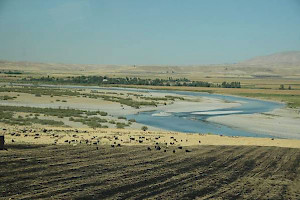
So, in the spring of 63 CE, Corbulo invaded Armenia again. He commanded four legions (III Gallica, V Macedonica, VI Ferrata, and the newly-arrived XV Apollinaris).note The disgraced legions IIII Scythica and XII Fulminata were left behind in Syria, where Gaius Cestius was Corbulo's deputy.note X Fretensis was to guard Cappadocia.
Corbulo commanded a considerable force and led them to Tigranocerta.note Vologases and Tiridates knew that this time, the war could no longer be won. On the other hand, Corbulo knew that it would be difficult to prolong the war, because fighting in the mountainous country was very hard. When Vologases sent envoys, Corbulo received them friendly.note
An armistice was agreed upon. The Roman negotiator was an Egyptian Jew named Tiberius Julius Alexander.note The Parthians conceded that in the future, the king of Armenia had to be appointed by the Roman emperor, and the Romans declared that they did not wish to prolong the war. The two parties agreed that Tiridates laid down his crown and was to go to Rome, where he would receive the object again from Nero.note In 66, Tiridates did indeed visit Rome (still a ruin because of the great Fire), and Nero closed the Gate of Janus. A war that everyone had wanted to avoid, had come to an end.
The Commagenian Affair
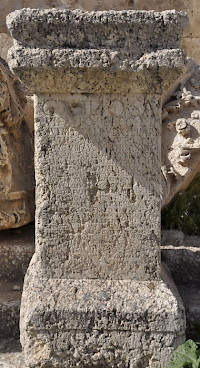
In 69, when the Romans were involved in a civil war (the Year of the Four Emperors), Vologases offered to support a Roman commander named Vespasian, who did not accept the offer. Later, when he was emperor, Vespasian deliberately ignored an insult by Vologases.note
One of Vespasian's early decisions was to add Commagene to the Roman Empire. (Its last king, Antiochus IV Epiphanes, had supported Rome in the Armenian War.) Two Commagenian princes, Epiphanes and Callinicus, now fled to the Parthians, but a Roman officer named Velius Rufus conducted the negotiations with Vologases I and obtained the extradition of the two princes. This incident is recorded in an inscription in Baalbek and by the Jewish historian Flavius Josephus.note
Final years
Cassius Dio reports tensions with Rome when the emperor Vespasian refused to support the Parthians against the Alans, who had in 72 invaded Armenia and Media Atropatene.note It seems that Vologases and Vespasian died at about the same time, in 78 and 79 CE.note Vologases was succeeded by Vologases II, who claimed to be a son of Vologases I, and his brother Pacorus II, the ruler of Media Atropatene mentioned above. The inevitable civil war was won by Pacorus.
That the Parthians regarded the reign of Vologases I as a great success, may be deduced from the fact that no less than five kings accepted his name as throne name.
Note
The chronology of the Arsacid kings of the Parthian Empire is less well-understood than, for example, the sequence of Seleucid and Ptolemaic kings or the emperors of Rome. This information is based on the researches by G.R.F. Assar, as published in "Iran under the Arsakids, 247 BC – AD 224/227" in: Numismatic Art of Persia (2011).